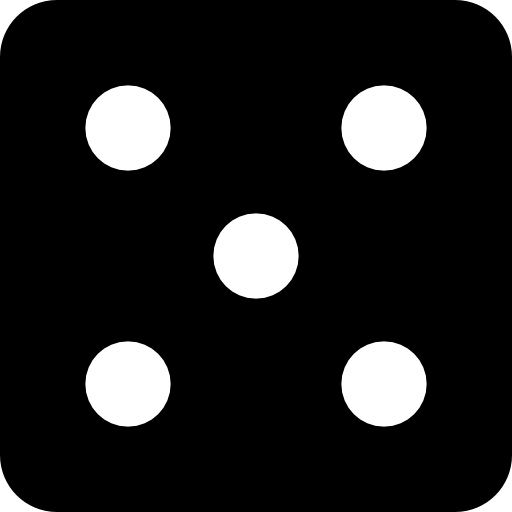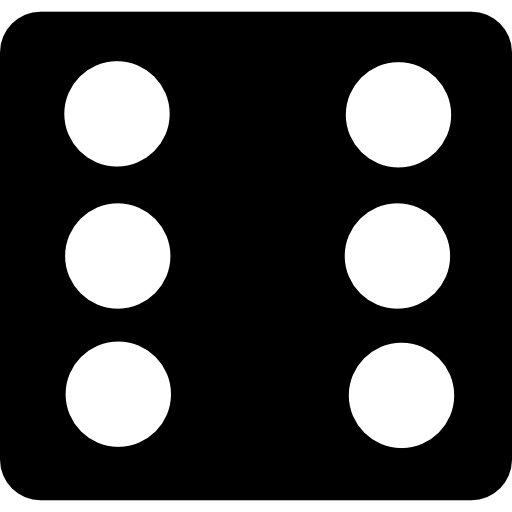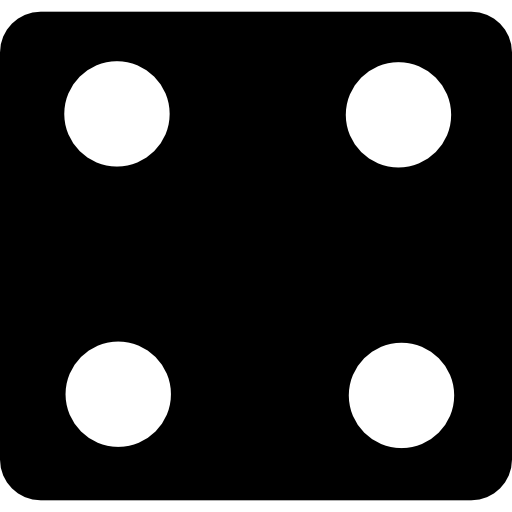Mythmaker SRD

Bookmark this to keep an eye on my project updates!
Myths & Dice
Mythmakers is a collaborative fantasy roleplaying game about taking the roles of characters in a world of myths, magic, and monsters. One person, the Storyteller, acts as the world itself and the arbiter of the rules while the other players act as characters within the adventure created by the Storyteller.
Your World
The world of Mythmaker takes place in a world of collaborative imagination agnostic of setting. That is to say, Mythmaker is intended to function as a system to facilitate fantasy adventures rather than serve as a setting guide. Certain elements such as magic, ancestries, and the supernatural are assumed but never enforced.
What this means is that your world both belongs and derives from you and the players at the table. Whether you're playing in an established setting or one of your very own creation, Mythmaker cares not. In fact, if some elements presented here conflict with the basis of your world, you should feel at liberty to rewrite them or even remove them wholesale.
This system puts forward the ethos that your world is your own and what you do or how you make use of this system is entirely up to you.
What You Need To Play
To play Mythmaker, you will need the following items:
- Paper
- Pencils
- At least one six-sided die (We recommend six dice)
- A Mythmaker Character Sheet
- A group of 3-5 people
The Mythmaker Character Sheet can be downloaded here: MYTHMAKER Character Sheet
Dice Rules
In Mythmakers, the outcomes of certain actions are determined by rolls of the dice. The numbers 4, 5, 6 are counted as successes while the numbers 1, 2, 3 are considered blunders.
When dice are rolled, only the successes are initially counted. For example, a roll that produces the result [1, 2, 4, 5, 6] would equal 3 successes. Blunders in this sense are neutral and don’t negate successes except in certain circumstances which will be explained later on in this chapter.
Pushes
6 is a special number in Mythmakers. When a player rolls a 6 on any die, they gain a push. When a character earns a push, not only does the player count the result of the original die as a success, but they can then roll the same die again. If anything other than a 6 is rolled then the results are counted as they would be normally.
The roll below has resulted in 2 successes, but there is one 6 which means that the roller gains one push. They then take the one die and reroll it.



In this case, they received a 4. Since the roll didn’t result in a 6, the roller just adds the result to the previous roll causing the total to sum up to 3 successes.

Challenges
A challenge is anything that blocks the forward progress of the story or a character from taking an action freely. Stories are full of challenges that test the abilities of the characters within them. Some challenges can prove to be trivial while others may determine the fate of the world itself. In Mythmakers, challenges are created by the Storyteller and presented to the party of characters at key points in the story.
In Mythmakers, a challenge’s difficulty is represented by its challenge rating, or CR for short. The challenge rating represents the amount of successes needed in order for the obstacle to be overcome.
A CR 4 obstacle requires 4 successes in order for it to be considered overcome. Remove this
All challenges generally fit within the following scale of difficulty:
| Challenge Rating (CR) | Level of Difficulty |
|---|---|
| CR 0 | There is no obstacle. |
| CR 1 | An easy obstacle. Anyone can do it. |
| CR 2 | An average obstacle. Most can overcome it. |
| CR 3 | A difficult obstacle. Overcoming it is hard, but not impossible. |
| CR 4 | An extremely difficult obstacle. Only the experienced can overcome this. |
| CR 5 | A master level obstacle. Only a master can handle this. |
| CR 6 | A heroic obstacle. Masters can only hope to overcome it. |
| CR 7+ | A mythical obstacle. Stories are told about those who overcome them. |
Challenge Types
While a challenge rating can indicate the amount of successes needed to overcome a given obstacle, the challenge type also indicates how those successes are taken into account and what happens should the players fail to overcome the challenge.
Blocks
Blocks are challenges that passively resist forward progress. A block indicates that if the players don’t gain enough successes to overcome the challenge, then nothing happens. A block is usually takes the form of a physical barrier standing in the way of the party.
BLOCK EXAMPLES
A boulder blocking a door, foliage blocking a road, a fence surrounding a manor…
Snares
Snares are challenges that passively resist movement. A snare indicates the amount of movement a player must spend before they can make any additional movement within an area. Otherwise, they remain stuck in the snare.
SNARE EXAMPLES
A crowded urban marketplace, a pile of collapsed rubble, walking through thick mud…
Contests
Contests are obstacles that are made between two active entities. In a contest, one side is exerting pressure while another side attempts to resist. If the contesting side earns more pressure than the contested side’s resistance, then something happens to the contested side. If the contesting side’s pressure is equal or less than the contested side’s resistance, then a stalemate is reached and nothing happens.
CONTEST EXAMPLES
Attacking in engagements, sneaking past oblivious guards, haggling in the marketplace
Perils
Perils are challenges that passively resist forward progress but also bear consequences for failing to overcome them. Perils are often accompanied with some kind of hazard, or a risky situation putting pressure on a character or group.
PERIL EXAMPLES
Jumping across a gaping chasm, harmful traps, swimming deep underwater…
Checks
A check is a challenge where only one success is required to pass. As long as at least one success is achieved, then a character overcomes the challenge. However, if the character does not manage to achieve any successes, then the character receives a negative consequence.
CHECK EXAMPLES
A character facing their fears, performing a simple yet failable task
Open
Open challenges do not have a strict challenge rating assigned to them. Open challenges are used as gauges to see how successful a character is at an open-ended action. In these cases, the Storyteller themselves determines what happens to a character at different levels of success.
OPEN CHALLENGE EXAMPLES
Investigating a room, using Memory to make academic judgements, using Insight to perceive details about the environment
Tests & Invoking Aspects
Players and their characters overcome challenges set forth by the Storyteller by making Tests. Tests require a character to use one of their available aspects. Each aspect carries a rating which ranges from 1 to 6 and represents the maximum amount of dice a player can choose to roll when making a Test using that aspect. When a character uses an aspect to make a test, they are invoking an aspect.
A standard character has eight aspects to invoke: Strength, Finesse, Endurance, Sense, Memory, Insight, Resolve, Wealth, and Profession.
A character with a Strength rating of 3 can roll up to three dice when confronted by a challenge where the use of strength can apply.
If a character has a rating in an aspect equivalent or greater to the CR of the Test, then they can choose to use their rating instead of rolling dice. However, if the player chooses to forgo this, then they must roll as normal and accept whatever result the dice produce.
A character with a Strength rating of 3 facing a Strength Test at CR 3 can choose to accept a result of 3 instead of rolling a number of dice equal to their Strength aspect.
The challenge rating of a Test can be affected by three modifiers: Enhancement, Hindrance, and Ease.
Enhancement is represents a number of dice that can be rolled in addition to the dice gained by invoking an aspect. Enhancement is often gained from the quality of an item or through supernatural means. Enhancement dice are rolled after an aspect has been invoked.
Hindrance in turn represents an increase to a challenge's existing rating. Actions performed in nightfall or darkness are often hindered significantly. In particular cases where something is said to be fully hindered, that means the challenge rating of performing said task while fully hindered is increased by 6.
Ease on the other hand represents a number of automatic successes towards a given Test. These successes are counted before the Test is made. If Ease alone can satisfy the challenge rating of a given Test, then the Test automatically succeeds.
However, there will often be times when invoking an aspect is not enough to clear a Test. When this occurs, a character may need to rely on their vigor.
Vigor
Vigor represents a character’s vitality and is determined by taking the sum of a character’s physical and mental aspects (Strength, Finesse, Endurance, Memory, Insight, and Resolve). This number represents a pool of dice a character can draw from in order to obtain more successes for a given Test.
A character with Strength 1, Finesse 1, Endurance 1, Memory 1, Insight 1, and Resolve 1 will have 6 vigor to start with.
To spend vigor, a character subtracts an amount from their vigor equal to or less than the rating of the aspect being utilized. For example, if a character with Strength 2 wanted to spend vigor towards a Test, then they would only be able to subtract a maximum of 2 from their vigor pool to roll 2 additional dice towards the Test.
A character can spend as much vigor as they would like towards a Test; however, each usage of vigor cannot exceed the rating of the invoked aspect. For example, if a character with Strength 2 were to spend 4 vigor, it would be spent increments of 2. At the same time, there is a cost to spending vigor in the form of fatigue.
Recovery
A character begins play with a maximum Recovery rating equal to half of their vigor rating (rounded down). Whenever a certain period of time passes, a character regains vigor equal to their Recovery rating. However when a character spends vigor towards a Test in any amount, their Recovery rating decreases by 1.
While there is a maximum value that a character's Recovery can be, there is no minimum meaning that it is possible to have a negative Recovery rating at a given point in time. When this occurs, a character loses vigor equal to the negative value. Restoring Recovery is achieved through Rests which are explained later on in this chapter.
A character with Strength 2 wants to spend 4 vigor towards a Test they've invoked their Strength aspect on. They subtract 2 from their vigor and roll the 2 dice while decreasing their Recovery rating by 1. Then they subtract another 2 dice, roll them, and decrease their Recovery rating by 1 yet again.
Majors & Minors
When a player spends vigor, there is a chance of earning a Major or a Minor. A Major or Minor influences the results of a Test depending on the type obtained.
- A Major Success occurs when all vigor dice rolled land on a 6. The number of successes from the roll equals double the number of dice used. So if a Major Success is achieved with 4 dice, then the result equals 8 successes total.
- A Minor Success occurs when all vigor dice rolled result in a success. A Minor Success indicates a favorable condition and provides 1 additional success to the roll. So if a Minor Success was achieved with 4 dice, then the result equals 5 successes total.

- A Minor Blunder occurs when all vigor dice rolled result in a blunder. A Minor Blunder indicates the occurrence of an inconvenience. When a Minor Blunder is rolled, the amount of successes achieved towards overcoming a Test is reduced by 1. If no successes can be reduced, then the challenge rating of the obstacle itself is increased by 1.
- A Major Blunder occurs when all vigor dice rolled land on a 1. A Major Blunder indicates that a significant misfortune has occurred. When a Major Blunder is rolled, the amount of successes achieved towards overcoming a Test is reduced equal to the number of dice rolled. If no successes can be reduced, then the challenge rating of the obstacle itself is increased by the number of major blunders achieved.
Advancing Aspects
When a character spends vigor equal to the aspect they are invoking towards a Test and receives a Minor or a Major success, they earn a mark towards that aspect. Marks are a measurement of a character's progression towards a given aspect. Once an aspect gains six marks, the aspect’s rating increases by 1 and all marks are reset. Only one mark can be obtained from a given Test though.
A character with Strength 2 spends 2 vigor and obtains a Minor Success. The character's Strength aspect then gains 1 mark.
When 6 marks are obtained, the character's Strength advances and becomes Strength 3. All marks are then reset. However, now the character must spend 3 vigor and obtain a Major or Minor in order to earn marks towards Strength.
Actions & Daylight
Actions in Mythmaker are defined as a specific period of time in which a Test is being made. For example, a World Action indicates that completing a Test would take at least 4 hours. An Engagement Action on the other hand would only take an instant. An action is considered complete either when a Test has been made and the results of it declared or when an action of a different type is made.
To the average adventurer, nothing is more important than daylight. Daylight allows one to follow the road ahead and to see the world. Once daylight runs out though, the world is plunged into night.
In Mythmakers, a day is broken into six periods with the first four representing daylight and the last two representing nightfall. During this time, characters can perform a range of actions which will naturally consume time depending on how long they take to perform. To keep track of this, the players and the Storyteller collaborate on maintaining the World Clock.
For example, if a player spends a Local Action to investigate rumors, the action is only complete after a Test has been made and after the Storyteller narrates the results.
Similarly, if a player uses a World Action to Travel from one town to a new town and then uses a Local Action to explore the new town, then the World Action is considered complete and the clock advances.
World Actions
A world action is any action that spans a chunk of daytime. Generally, world actions consume around 1 to 4 hours and upon completion advance the World Clock by one period.
Travel
Allows a character to move up to a certain number of miles equal to their Movement rating.
Camp
Allows a character or a group of characters to establish a camp for the sake of rest, nourishment, and resisting the elements of the wild. See Camping in Chapter 7 for additional details.
Long Rest
A character that makes a Long Rest can increase their Recovery rating equal to their maximum Recovery value. The character can also make an Recovery Test to reduce their wounds equal to the number of successes achieved.
Local Actions
A local action is any action that spans a short amount of time or focuses on a locale. Generally, local actions consume around 15 to 60 minutes and upon completion add 1 tick to the World Clock. When any given member of the party has used 4 Local Actions and added 4 ticks to the World Clock, all ticks are reset and the World Clock advances by one period.
Explore a Location
Allows a character to move between a certain number of areas equal to their Movement rating.
Interact with a Location
Allows a character to make a Test towards performing an action that affects a location.
Performing for a crowd, carousing, playing a game, meet with the local government.
Haggling
Allows a character to interact with the marketplace of a settlement or with a specific vendor in order to obtain an item.
Short Rest
A character that makes a Short Rest can reduce their fatigue rating equal to their Endurance rating. The character can also make an Endurance Test to reduce their wounds equal to the number of successes achieved.
Free Actions
A Free Action is an action that any given character can perform with no hassle at all. Examples of free actions include speaking freely, drawing a sword, opening an unlocked door, or recalling immediate knowledge about a subject. A character can take as many Free Actions as is within reason except during Engagements where special rules apply.
Movement
Walking through abandoned ruins, swimming across a river, and traveling the countryside are all examples of movement a character can make while on their adventures.
In Mythmaker, a character moves through a landscape by making Move Actions. Move Actions are a form of free action that allow any character or creature to move through an uninhibiting space. Outside of engagements, a character's movement resets whenever time passes after a Test has been completed.
| Action | Movement |
|---|---|
| Travel | A Move Action lets you move 1 mile |
| Explore a Location | A Move Action lets you move to 1 location |
| Engagement | A Move Action lets you move 1 square or 1 zone |
Movement generated by a character persists as long as the character is still operating within that frame of time. This means that if a character is only performing local actions, then they maintain the movement they've generated through the Explore a Location action. However, if they were to perform a world action or get into an Engagement, then the character's Movement is reset.
Assisting Actions
If more than one character is capable of making or contributing towards a Test, then the successes obtained from each individual action can be pooled together rather than be handled individually.
A warrior character with Strength 2 starts a Test against a challenge to move a boulder blocking the entrance to a dungeon. The Storyteller deems the difficulty of this challenge to be CR 3. After rolling their two dice, the warrior comes up short with only 1 success. However, another character with Strength 2 decides to assist with this action and invokes their aspect towards the Test. The second roller manages to obtain 2 successes allowing both characters to meet the CR and move the boulder.
In order to make an assist, both characters must be capable of making the same Test. In Tests that involve recalling specific lore or knowledge, a characters would need to have an aspect, profession, or relevant feature that allows them to assist another character with knowledge in that subject.
Engagement Actions
Engagement actions are actions that happen in an instant or draw everyone involved into a moment-to-moment playthrough of events. Engagements come into play whenever fast paced events occur such as combat or overcoming a peril. The Engagements section details this further in the Engagements section.
Downtime Actions
Downtime Actions are actions a character can make between adventures or sections of their journey. Unlike normal actions, Downtime actions take place over the span of entire days or even weeks. More details and actions a character can take during downtime are provided in the Downtime section.
Improvised Actions
If the action a character wishes to take falls beyond the purview of the actions defined above, then it becomes an improvised action. For these, use the existing rules as a guideline and determine an approximate amount of time it would take to complete the action and rule it accordingly. If it would take a few hours, then it is most likely a world action. If its something that can be done instantly, then it may be a Free Action.
How to Play
The game of Mythmakers follows the following pattern.
-
The Storyteller describes the environment and situation to the players. The story begins and the characters are informed of their current circumstances.
The characters find themselves in a burning tavern. There is fire all around and smoke threatens to steal their breaths away if they don’t react soon. A fire is blocking the main entrance but there are windows all around.
-
The players decide what actions their characters take in response and the Storyteller determines the challenge. The players can use their characters' abilities to react accordingly. The Storyteller takes this information and determines if there is anything challenging the actions of the characters.
One player declares their intent to jump through one of the windows. The storyteller states that jumping through the window is a fairly easy Block challenge and says succeeding would require a CR 2 Finesse Test.
-
The players invoke aspects against their Tests and determine if they wish to spend vigor. The players roll dice according to the rating of their invoked aspects along with any enhancement.
The player jumping through the window makes their Finesse Test and obtains only 1 success. It's not enough and so they declare they would like to use vigor. They subtract a few dice from their vigor pool, add a point of fatigue, and roll the dice. They gain 2 more successes which allows them to complete the test
-
The Storyteller describes the results. After the players have completed their Tests, the Storyteller narrates the aftermath. The Storyteller would decide here whether they would wish to add Tension to a Test's results.
No Tension
The Storyteller declares that the player has passed their Test and states they have jumped through the window successfully.
Tension
The Storyteller declares they are adding Tension to the test and describe that the window is much narrower than the character had gauged. They roll their dice and the successes they receive raises the difficuly to CR 4. Now the player must use more vigor to clear the challenge or rely on an ally for help.
From here, this cycle would repeat and vary throughout the course of the adventure with different Tests coming into play depending on the circumstances caroused by the players and their decisions.